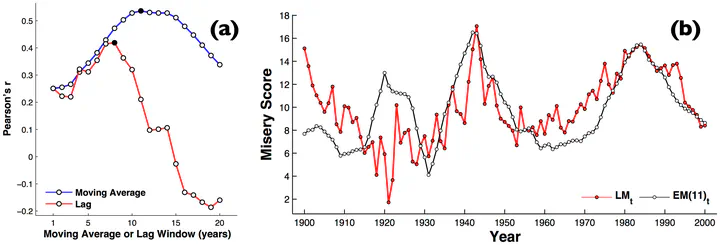Books average previous decade of economic misery
Jan 8, 2014· ,,·
0 min read
,,·
0 min read
R. Alexander Bentley
Alberto Acerbi
Paul Ormerod
Vasileios Lampos

Abstract
For the 20th century since the Depression, we find a strong correlation between a ‘literary misery index’ derived from English language books and a moving average of the previous decade of the annual U.S. economic misery index, which is the sum of inflation and unemployment rates. We find a peak in the goodness of fit at 11 years for the moving average. The fit between the two misery indices holds when using different techniques to measure the literary misery index, and this fit is significantly better than other possible correlations with different emotion indices. To check the robustness of the results, we also analysed books written in German language and obtained very similar correlations with the German economic misery index. The results suggest that millions of books published every year average the authors’ shared economic experiences over the past decade.
Type
Publication
Bentley, R.A., Acerbi, A., Omerod, P., Lampos, V. (2014), Books average previous decade of economic misery, PLOS ONE, 9(1), e83147